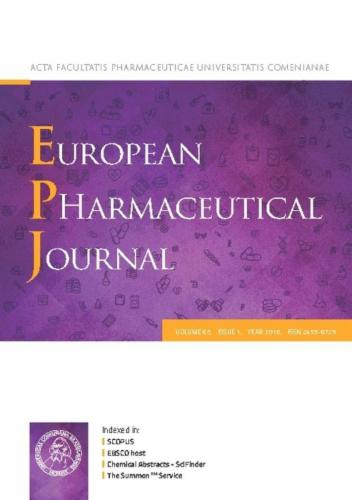Impact of therapeutic drug monitoring on microbiological eradication in patients with staphylococcus aureus bacteremia
IF 4.7
3区 医学
Q1 PHARMACOLOGY & PHARMACY
引用次数: 0
Abstract
This study aims to investigate the impact of therapeutic drug monitoring (TDM) on the microbiological eradication rate in patients with Staphylococcus aureus bacteremia. Demographic information and laboratory data were collected for patients who were diagnosed with Staphylococcus aureus bacteremia during their hospital stays from January 2021 to May 2024. A total of 105 patients were included in the TDM group and 208 patients in the non-TDM group. The Chi-squared test showed a significantly higher microbiological eradication rate in the TDM group compared to the non-TDM group before (p < 0.001) and after (p = 0.003) propensity score matching. Subgroup analysis showed that the eradication rate was significantly higher in the TDM group for patients with either methicillin-sensitive Staphylococcus aureus bacteremia (p < 0.001) or methicillin-resistant Staphylococcus aureus bacteremia (p = 0.007). Moreover, for patients with multi-site infections, the microbiological eradication rate was significantly higher in the TDM group for either methicillin-sensitive Staphylococcus aureus bacteremia (p < 0.001) or methicillin-resistant Staphylococcus aureus bacteremia (p < 0.001). Although the drugs undergoing TDM in this study-vancomycin, daptomycin, linezolid, and teicoplanin-are primarily used for treating methicillin-resistant Staphylococcus aureus bacteremia, TDM for these agents can also significantly improve the microbiological eradication rate in methicillin-sensitive Staphylococcus aureus bacteremia. Furthermore, multivariate logistic regression analysis confirmed that TDM is an independent protective factor for microbiological eradication rate (p < 0.001). In conclusion, this study demonstrates that performing TDM in patients with Staphylococcus aureus bacteremia can indeed enhance the microbiological eradication rate, thereby improving patient outcomes.

治疗药物监测对金黄色葡萄球菌菌血症患者微生物根除的影响。
本研究旨在探讨治疗药物监测(TDM)对金黄色葡萄球菌菌血症患者微生物根除率的影响。收集2021年1月至2024年5月住院期间诊断为金黄色葡萄球菌菌血症的患者的人口统计信息和实验室数据。TDM组105例,非TDM组208例。卡方检验显示,倾向评分匹配前(p < 0.001)和倾向评分匹配后(p = 0.003),TDM组微生物根除率显著高于非TDM组。亚组分析显示,无论是甲氧西林敏感型金黄色葡萄球菌菌血症(p < 0.001)还是耐甲氧西林型金黄色葡萄球菌菌血症(p = 0.007),TDM组患者的根除率均显著高于TDM组。此外,对于多部位感染患者,TDM组对甲氧西林敏感金黄色葡萄球菌菌血症(p < 0.001)或耐甲氧西林金黄色葡萄球菌菌血症(p < 0.001)的微生物根除率均显著高于TDM组。虽然本研究中进行TDM的药物万古霉素、达托霉素、利奈唑胺和替柯普兰主要用于治疗耐甲氧西林金黄色葡萄球菌菌血症,但对这些药物进行TDM也可以显著提高对甲氧西林敏感的金黄色葡萄球菌菌血症的微生物根除率。此外,多因素logistic回归分析证实TDM是微生物根除率的独立保护因素(p < 0.001)。综上所述,本研究表明,对金黄色葡萄球菌菌血症患者进行TDM确实可以提高微生物根除率,从而改善患者预后。
本文章由计算机程序翻译,如有差异,请以英文原文为准。
求助全文
约1分钟内获得全文
求助全文
来源期刊
CiteScore
9.60
自引率
2.20%
发文量
248
审稿时长
50 days
期刊介绍:
The journal publishes research articles, review articles and scientific commentaries on all aspects of the pharmaceutical sciences with emphasis on conceptual novelty and scientific quality. The Editors welcome articles in this multidisciplinary field, with a focus on topics relevant for drug discovery and development.
More specifically, the Journal publishes reports on medicinal chemistry, pharmacology, drug absorption and metabolism, pharmacokinetics and pharmacodynamics, pharmaceutical and biomedical analysis, drug delivery (including gene delivery), drug targeting, pharmaceutical technology, pharmaceutical biotechnology and clinical drug evaluation. The journal will typically not give priority to manuscripts focusing primarily on organic synthesis, natural products, adaptation of analytical approaches, or discussions pertaining to drug policy making.
Scientific commentaries and review articles are generally by invitation only or by consent of the Editors. Proceedings of scientific meetings may be published as special issues or supplements to the Journal.

 求助内容:
求助内容: 应助结果提醒方式:
应助结果提醒方式:


